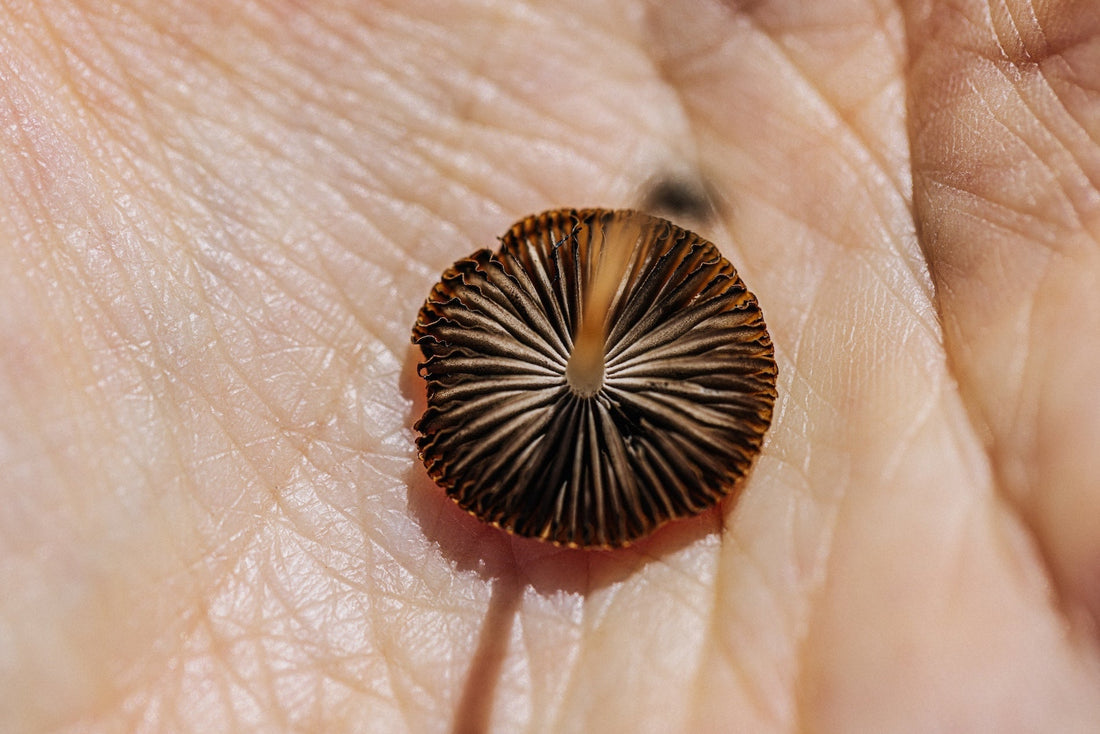
The Biology of Mushrooms
Share
They are not animals, but they are not plants either. They live everywhere, but often you can't see them. Some are microscopic, while others manifest themselves in spectacular forms.
They are simple and complex organisms at the same time, mysterious and fascinating. Mushrooms play a key role in the ecosystem and hide within them powerful molecules for human health.
A Kingdom apart, among plants and animals
Until less than 100 years ago, mushrooms were classified as plants. These organisms do indeed have characteristics that make them similar to plants , however they have characteristics that unite them to animals and unique peculiarities that distinguish them from both. It is not surprising, therefore, that today mushrooms have a kingdom all their own: the Kingdom of Fungi .
Fungal cells, like plant cells, have a cell wall that provides rigidity and protection. However, while plant cell walls are made of cellulose, fungi cell walls are made of chitin , the same substance that forms the skeletons of insects and crustaceans .
Fungi, like plants, grow anchored to a substrate (e.g. soil) and can produce specific structures that resemble roots, branches and seeds . But while plants obtain food and energy through photosynthesis, fungi feed on organic matter present in the environment around them, like animals do.
A range of different shapes
Fungi come in a huge variety of shapes and structures. Some, like yeasts, are made up of just one cell and are so small that they can only be seen under a microscope. Other fungi, however, are made up of many cells ( fungi multicellular ) organized in more complex structures, but often remain hidden in the soil or in the substrates in which they grow. Then there are macroscopic fungi , also called higher fungi, which develop structures visible to the naked eye, such as the mushrooms with caps and stems found in the woods.
In multicellular fungi, cells join together to form very thin filaments called hyphae . These filaments intertwine to form a network called mycelium , which is the main part of the fungus. Mycelium grows in soil, wood, or other materials. It is the hidden, vital part of the fungus that is responsible for growth, nutrient absorption, and survival of the organism.
When conditions are favorable, the mycelium can give rise to a special structure, the so-called fruiting body . This is the visible part of the mushroom, the one that emerges from the ground or from tree trunks. The fruiting body has the task of producing and releasing spores , which are like small seeds that allow mushrooms to reproduce and spread to new environments.
In the popular imagination, mushrooms are known only for their external part, but in reality most of their structure remains invisible, underground, where it lives and works in close connection with the environment to maintain the balance of ecosystems .
Countless places, countless possibilities
Whether as intricate webs of mycelium or majestic fruiting bodies, fungi are found everywhere on Earth, occupying a variety of habitats from woodlands and forests to arid deserts, seabeds, and polar ice caps. This adaptability reflects the extraordinary evolutionary diversity and chemical richness that characterizes these organisms.
These organisms produce a wide range of bioactive molecules that have revolutionized science and medicine:
-
Antibiotics , such as penicillin , discovered by the fungus Penicillium notatum ;
-
Immunosuppressants , such as cyclosporine , first discovered in the mushroom Tolypocladium nivenum ;
-
Psychotropic substances , such as psilocybin , historically used as a psychedelic in spiritual ceremonies but more recently applied therapeutically to treat neuropsychiatric disorders.
-
Other bioactive compounds, thanks to which mushrooms have been used for centuries in traditional Chinese medicine for their health properties (antioxidant, immunomodulatory, anti-inflammatory, hypoglycemic, neuroprotective, etc.).
To date, approximately 150,000 species of fungi have been described , but the actual number is estimated to be far higher, representing a universe of possibilities yet to be explored.
Bibliography:
-
Cole GT. Basic Biology of Fungi. In: Baron S, editor. Medical Microbiology. 4th ed. Galveston (TX): University of Texas Medical Branch at Galveston; 1996. Chapter 73.
-
Gostinčar C, et al. Extremophilic and extremotolerant fungi. Curr Biol. 2023;33(14):R752-R756.
-
LibreTexts. Biology. Fungi Structure. Available at the link: https://bio.libretexts.org/Bookshelves/Introductory_and_General_Biology/Introductory_Biology_(CK-12)/08%3A_Protists_and_Fungi/8.09%3A_Fungi_Structure .
-
Lowe H, et al. The Therapeutic Potential of Psilocybin. Molecules. 2021;26(10):2948.
-
Phukhamsakda C, et al. The numbers of fungi: contributions from traditional taxonomic studies and challenges of metabarcoding. Fungal Diversity. 2022;114, 327–386.
-
Rousta N, et al. Effects of fungal based bioactive compounds on human health: Review paper. Crit Rev Food Sci Nutr. 2024;64(20):7004-7027.
-
Sanchez S, et al. Bioactive Products from Fungi. Food Bioactives. 2017:59–87.
- Science. What Is The Difference Between Plants, Fungi & Animals? Available at the link : https://www.sciencing.com/what-is-the-difference-between-plants-fungi-animals-12307278/

